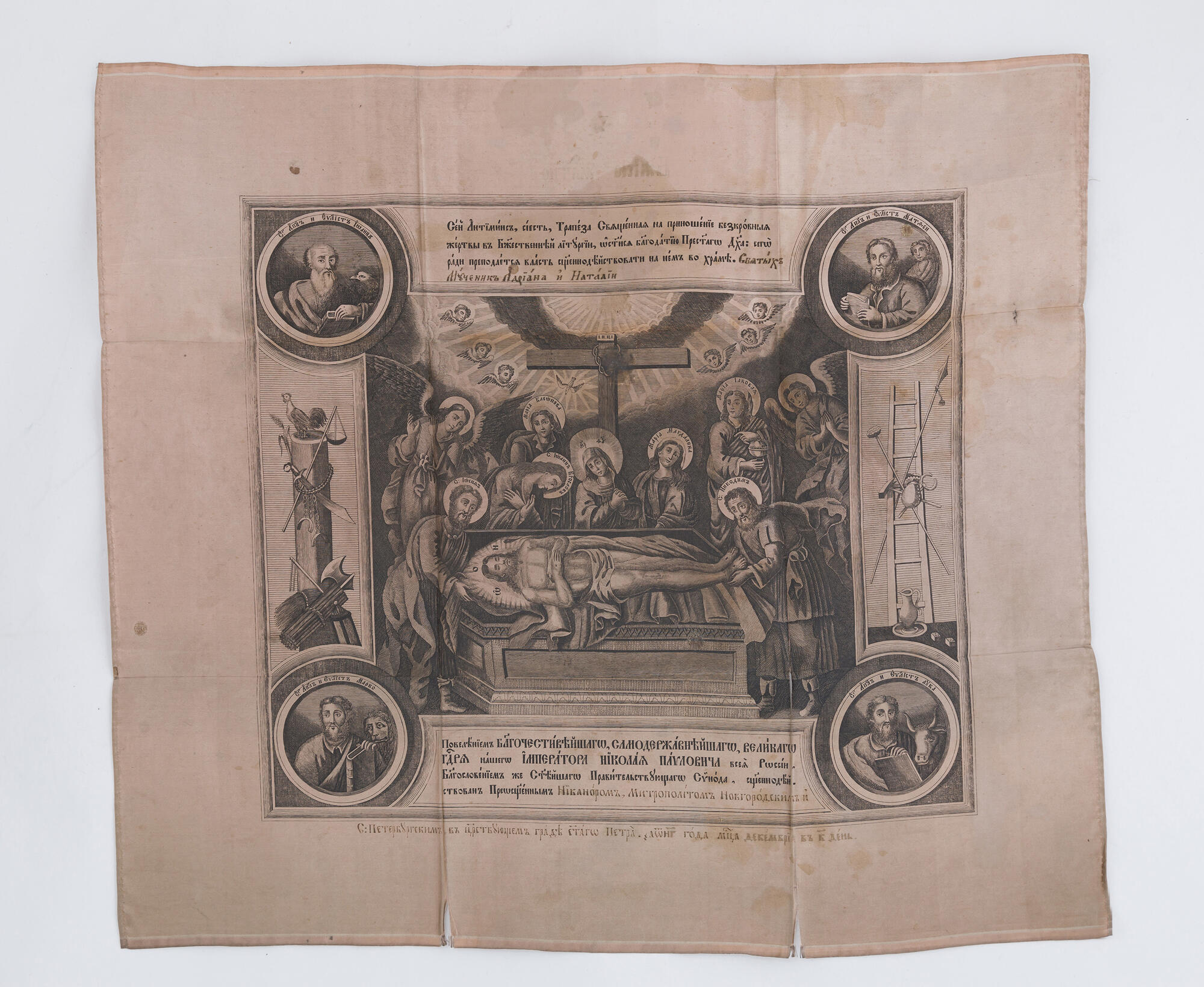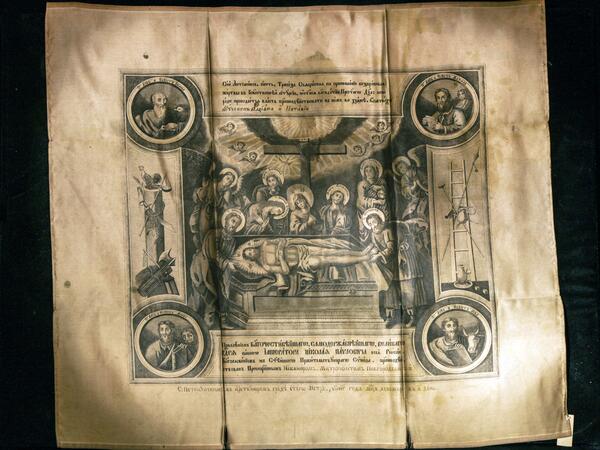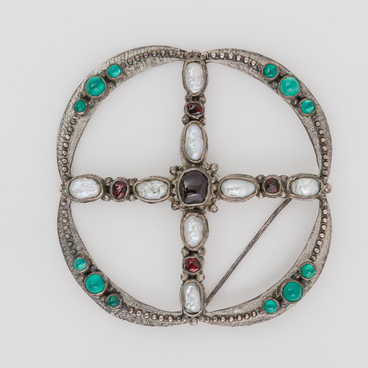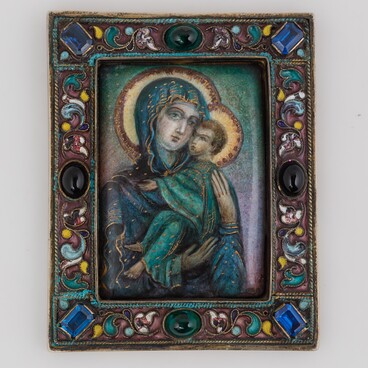An antimins is a quadrangular cloth for Orthodox worship. Its name translates as the “side altar” and is used to cover the altar or throne. An antimins is made of silk or linen, with a fragment of a Christian martyr’s relic sewn into it. For preservation, the antimins is wrapped in another silk cloth, a dark red iliton. It resembles the cloth that was wrapped around the head of Jesus Christ in the tomb.
The antimins is unfolded at a certain moment in the divine service, and only members of the clergy are allowed to touch it. If during a liturgy there is a fire or other natural disaster in the church, the priest is obliged to take the Holy Gifts together with the antimins outside, unfold it in any convenient place and complete the service on it, since it represents a substitute for the altar. This tradition dates back to the time of Christian persecution, when the liturgy was celebrated on the tombs of martyrs. Since the 8th century, relics were inserted into the altar for church services, and then they began to be stitched into the antimins, using a special fragrant mixture — wax mastic.
The Museum of the History of World Cultures and Religions displays the antimins dated to 1853. On its upper edge is an inscription in the Old Slavonic language, which states that the antimins was dedicated to the holy martyrs Adrian and Natalia. Fragments of their relics were sewn into this antimins. The inscription on the bottom edge of the antimins says that it was authorized for use by the high priest Nicanor Metropolitan of Nizhny Novgorod and St. Petersburg by order of Emperor Nicholas I.
The antimins features the scene of the entombment of Jesus Christ after his removal from the cross. He is mourned by the Mother of God seated over the body of her son, followed by her sister Mary of Cleopas and Mary Magdalene, a follower of Christ. At the feet of Jesus, St. Nicodemus leans down. A beam of light with a dove can be seen above the cross, which is a symbolic representation of the Holy Spirit.
At the corners in round border scenes there are the apostles with the animals seen by St. John the Theologian on the Throne of Christ the Almighty in the Temple of Heaven. These symbols refer in the Church to the four Evangelists: the man — the symbol of human nature — to Matthew; the lion — the symbol of royal power — to Mark; the calf — the symbol of the sacrificial animal — to Luke; the eagle — the symbol of the higher angelic nature — to John.
The antimins is unfolded at a certain moment in the divine service, and only members of the clergy are allowed to touch it. If during a liturgy there is a fire or other natural disaster in the church, the priest is obliged to take the Holy Gifts together with the antimins outside, unfold it in any convenient place and complete the service on it, since it represents a substitute for the altar. This tradition dates back to the time of Christian persecution, when the liturgy was celebrated on the tombs of martyrs. Since the 8th century, relics were inserted into the altar for church services, and then they began to be stitched into the antimins, using a special fragrant mixture — wax mastic.
The Museum of the History of World Cultures and Religions displays the antimins dated to 1853. On its upper edge is an inscription in the Old Slavonic language, which states that the antimins was dedicated to the holy martyrs Adrian and Natalia. Fragments of their relics were sewn into this antimins. The inscription on the bottom edge of the antimins says that it was authorized for use by the high priest Nicanor Metropolitan of Nizhny Novgorod and St. Petersburg by order of Emperor Nicholas I.
The antimins features the scene of the entombment of Jesus Christ after his removal from the cross. He is mourned by the Mother of God seated over the body of her son, followed by her sister Mary of Cleopas and Mary Magdalene, a follower of Christ. At the feet of Jesus, St. Nicodemus leans down. A beam of light with a dove can be seen above the cross, which is a symbolic representation of the Holy Spirit.
At the corners in round border scenes there are the apostles with the animals seen by St. John the Theologian on the Throne of Christ the Almighty in the Temple of Heaven. These symbols refer in the Church to the four Evangelists: the man — the symbol of human nature — to Matthew; the lion — the symbol of royal power — to Mark; the calf — the symbol of the sacrificial animal — to Luke; the eagle — the symbol of the higher angelic nature — to John.



